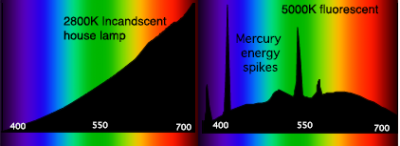- Joined
- Jul 28, 2015
- Messages
- 4,668
- Reaction score
- 3,191
They do seem to be on target with the individual channels and when they are mixed even at low intensity.
As for the Kelvin it was kind of a disappointment to me as I was hoping to see at least up to 20k as I've been curious what K my lights are at. I feel 20K is way to blue and think I like something around 14K but what I feel is 14K may look like 10K to someone else and what I feel is 20K may look like 14K to someone else.
But as soon as any blue channel turns on my Kelvin reading goes NA.
As for the Kelvin it was kind of a disappointment to me as I was hoping to see at least up to 20k as I've been curious what K my lights are at. I feel 20K is way to blue and think I like something around 14K but what I feel is 14K may look like 10K to someone else and what I feel is 20K may look like 14K to someone else.
But as soon as any blue channel turns on my Kelvin reading goes NA.



















